Buckwheat for weight loss: can you eat it on a diet?
People have given buckwheat the name “queen of cereals.” Buckwheat is easy to prepare, children and adults love it, dishes based on it can be found in a wide variety of diets. The composition contains a unique complex of useful elements that not every cereal can boast of.
The benefits of buckwheat are beyond doubt. But the debate about whether this product should be included in diets aimed at weight loss is very active and far from over.
Composition of buckwheat
100 g of buckwheat contains:
- calories - 343;
- proteins - 13 g;
- fats - 3.4 g;
- carbohydrates - 72 g;
- saturated fat - 0.7 g;
- polyunsaturated fatty acids - 1 g;
- monounsaturated fatty acids - 1 g;
- fiber - 10 g;
- sodium - 1 mg;
- calcium - 18 mg;
- iron - 2.2 mg;
- magnesium - 231 mg;
- potassium - 460 mg;
- vitamin A - 0.002 mg;
- vitamin E - 6.7 mg;
- vitamin B1 - 0.4 mg;
- vitamin B2 - 0.2 mg;
- vitamin B6 - 0.3 mg;
- vitamin B9 - 0.029 mg;
- vitamin PP—4.2 mg;
- beta-carotene - 10 mg.
The chemical composition of buckwheat is extremely rich and, to a certain extent, unique for cereals. Only it contains a complex of beta-carotene, vitamins A, group B, E, H and PP.
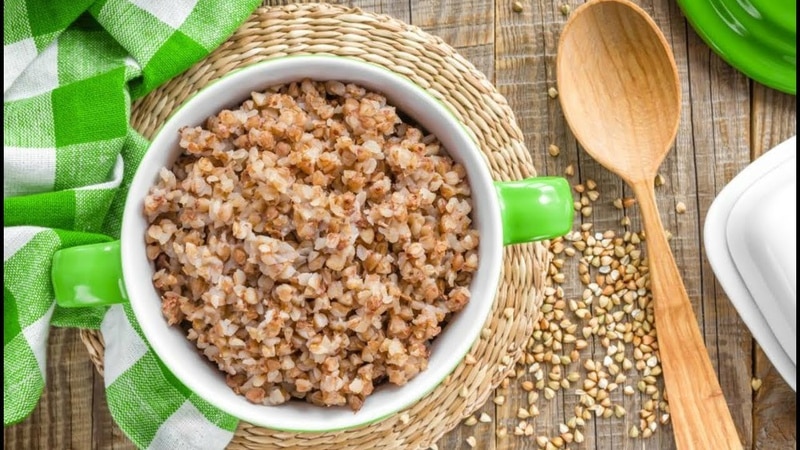
In addition, buckwheat contains metals, macro- and microelements, without which the body cannot fully function: potassium, magnesium, zinc, selenium, copper and manganese, iron, chlorine and sulfur, iodine, chromium, fluorine, molybdenum, boron and vanadium, tin and titanium, silicon, nickel and cobalt.
Buckwheat contains a lot of easily digestible protein. This protein stimulates hematopoiesis and increases hemoglobin levels. Buckwheat is also recommended for those who suffer from kidney and liver diseases; it is used for atherosclerosis, as well as a tendency to edema.
Buckwheat indicated for people suffering from diabetes. The glycemic index of this product is about 50–60 units. It is able to effectively remove “bad” cholesterol from the body and normalizes sugar levels. The flavonoids contained in cereals significantly reduce the risk of developing diabetes.
This is interesting! The benefits of buckwheat are not limited to cereals alone. Its husk is widely used as a filling for pillows, thanks to which a huge number of people have been able to get rid of sleep disorders.
Benefits of buckwheat for weight loss
Almost any diet aimed at losing weight is associated with many inconveniences, and sometimes even dangerous to health. And first of all, these restrictions relate to the amount of food and water consumed. As a result, dieters constantly feel hungry and thirsty. Also, due to restrictions in the diet, the balance of nutrients is disrupted. The body does not receive enough essential vitamins and microelements, which can lead to diseases.
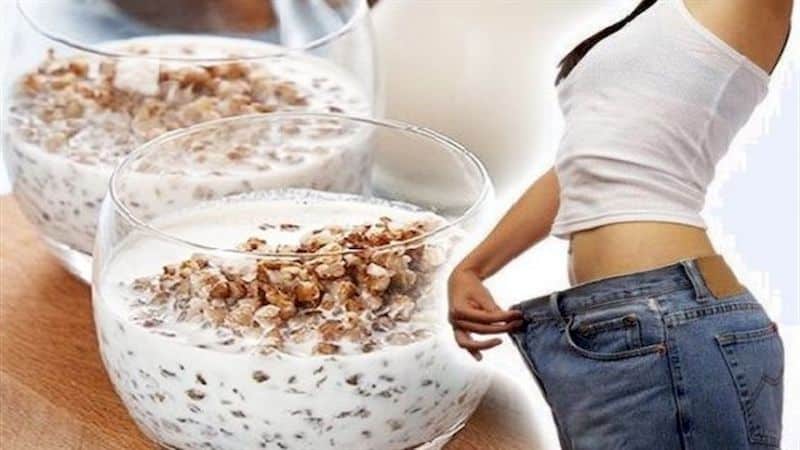
The buckwheat diet has a number of benefits that make life easier for those who want to lose excess weight:
- This cereal can easily replace meat in a vegetarian diet. Due to the high content of protein, vitamins and microelements, it helps to compensate for the lack of those substances that the body receives only from meat foods.
- A characteristic feature of buckwheat is the presence of slow carbohydrates.They are broken down by the body for a long time, thanks to which the feeling of fullness persists for several hours.
- Buckwheat is well absorbed by the body and is suitable for nutrition of people at any age.
- Buckwheat is hypoallergenic. Unlike other cereals, it does not contain gluten.
- The product has cleansing properties and helps remove toxins from the body.
- Buckwheat successfully rids the body of excess fluid and regulates metabolism.
- Eating this cereal helps get rid of cellulite.
- Buckwheat porridge has a beneficial effect on appearance. The condition of the skin, nails, and hair improves.
- The components of the cereal reduce the likelihood of varicose veins and cardiovascular diseases, reduce the risk of developing sclerosis, and strengthen the immune system.
- The cost of buckwheat is relatively low, so such a diet will not affect the budget.
How effective is buckwheat for weight loss?
The buckwheat diet is extremely effective. With strict adherence to the regime, it takes about 1 kg per day. Accordingly, with a mono-diet lasting 2 weeks, you can lose from 7 to 12 extra kg. For gentle diets, this is a high figure. In combination with the beneficial properties of cereals, a buckwheat diet is considered one of the most effective.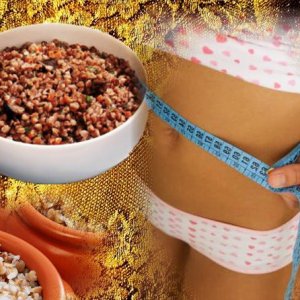
Nutritionists definitely recommend buckwheat. In addition to fighting extra pounds, it cleanses the body, improves digestion and helps strengthen the immune system. Therefore, even one fasting day on buckwheat.
Although the benefits of buckwheat are undeniable, you should not eat it exclusively. This product can be consumed every day, but only in combination with other products. A mono-diet for more than 14 days can seriously harm the body.
Important! Buckwheat performs best when there is significant excess weight. But you should not rely on a buckwheat diet in cases where body weight is exceeded by no more than 5 kg. At such indicators, the effect will be weakly expressed.
Many people are concerned about whether it is possible to gain weight by eating buckwheat. It is often caused by the fact that the caloric content of this product is decent - 343 kcal. But this indicator applies only to 100 g of dry cereal. Boiled in water, it will contain only 132 kcal.
You can gain weight only by combining buckwheat with other “harmful” foods. In such cases, all its benefits come to naught. To avoid this, cross out from your menu:
- fried foods;
- smoked products;
- canned food;
- flour products;
- industrially prepared sauces.
You won’t be able to lose weight if you add butter and sugar to buckwheat. However, when asked whether or not buckwheat can be combined with other foods during a diet, doctors answer in the affirmative. Buckwheat goes best with vegetable salads, lean meat or chicken. At the same time, buckwheat itself is best consumed for breakfast or lunch.
Features of the buckwheat diet
The buckwheat diet is quite varied and is not limited to just one type. Depending on the diet, timing and goals, buckwheat diets can be divided into several types.
By number of components and serving sizes: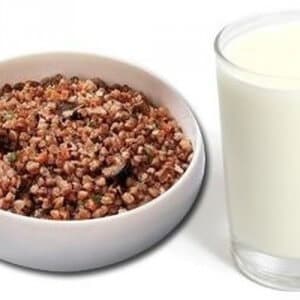
- Easy. With this diet, you can include some meat (lean beef, turkey or chicken breasts), fruits, cooked or raw vegetables and salads. Buckwheat should be a staple.
- Average. This type of diet allows for the consumption of small amounts of fruits and vegetables.
- Strict. This is a mono diet.It is allowed to eat only buckwheat and drink low-fat kefir - no more than 1 liter.
Another gradation concerns the period during which you will have to limit yourself in food:
- One day diet. This includes “fasting days,” which are so popular among those who want to lose weight. They last one day once a week or less. On all other days, the diet does not change. They are easy to endure due to the short period of time, and the body receives the necessary cleansing of toxins and other harmful substances.
- Strict diet lasting 3 days. During this diet, only buckwheat, water or unsweetened tea are allowed. The nutrition program allows you to quickly lose about 2-3 kg.
- Weekly diet. With this diet, you can choose easy, medium or strict options. Rigor depends on internal motivation and expected results.
- Buckwheat diet lasting 2 weeks. It also allows for 3 options for diet severity. This diet is considered the most difficult. It is difficult to withstand: serious self-discipline and motivation are required. Another condition for carrying out the diet is the absence of health contraindications.
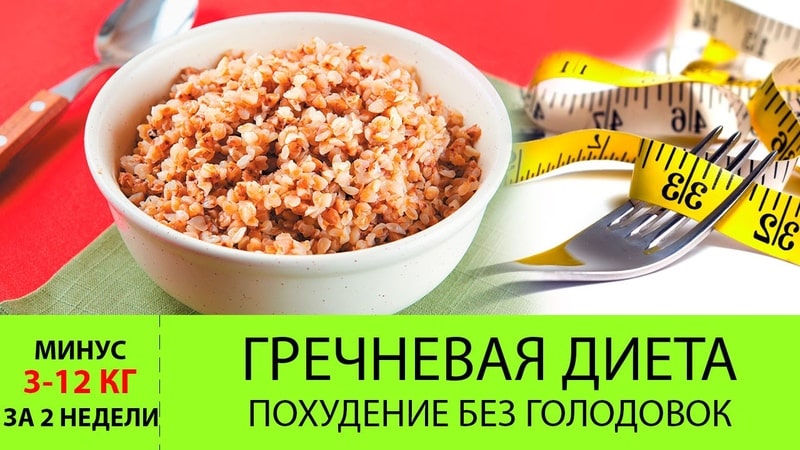
For all types of diets, regardless of timing and severity, there is one general rule: drink plenty of fluids. You can drink plain clean water or tea without sugar (preferably green). To achieve the best results, you should drink at least 1.5 liters of liquid per day.
Buckwheat is a food that does not cause allergies and is easily digestible, so its use has no age restrictions. But people over 50 years old are advised to consult a doctor before starting a diet.
Important! If your condition worsens during the diet, weakness or apathy appears, stop the program and consult a doctor.
Cooking buckwheat during a diet
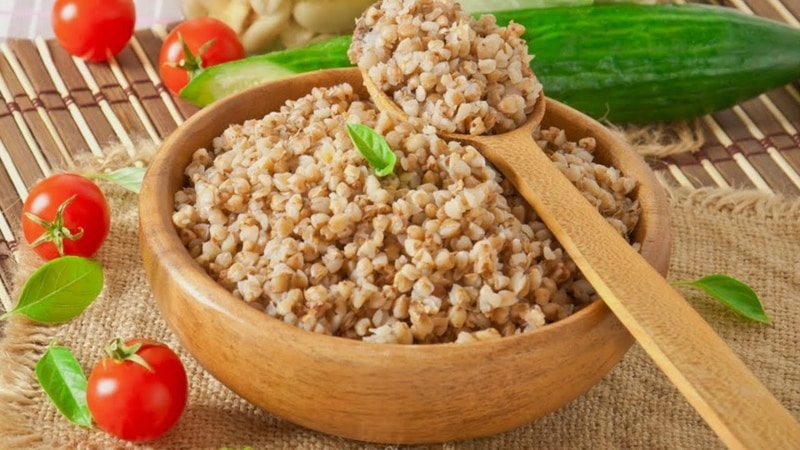
For those who decide to try the buckwheat diet, nutritionists recommend using two types of cereals: kernels and green buckwheat.
The kernel is obtained from mature buckwheat grain, which is thermally treated and removed from the husk. This is the most common and well-known type of buckwheat, widely represented in modern supermarkets.
The main dish made from this type of buckwheat is porridge. Porridge is the simplest and lowest-calorie dish made from buckwheat. It can be prepared in two ways: boiled or steamed.
When steaming, you just need to rinse the cereal and then pour boiling water over it. For one glass of kernels you will need 2 cups of boiling water. After this, cover the buckwheat, wrap it in a towel and leave to steam. A thermos with a wide neck is suitable for cooking.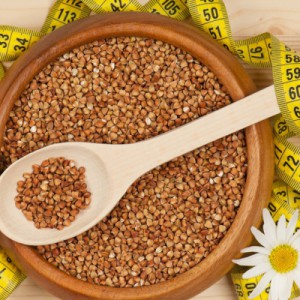
It is best to steam the cereal in the evening and leave it overnight. Then in the morning you will have crumbly porridge waiting for you for breakfast. One glass of cereal is enough for the whole day. The finished porridge is divided into several servings, and low-fat kefir can be added to some. It goes well with buckwheat and increases the effectiveness of the diet.
Another way to prepare buckwheat is boiling. The cereal is filled with water in the same proportions as when steaming and cooked for about 10 minutes. After this, you need to cover it with a lid and leave to steam until completely cooked.
When cooking buckwheat, you can add skim milk instead of water. This will make the resulting porridge more tasty, but will also increase its calorie content. You can also use kefir. 150 g will be enough.
If you analyze the usefulness of the resulting dishes, you should give preference to steaming. Although this method requires more time, it is more gentle. Heat treatment destroys a number of substances beneficial to the body, while steaming preserves them.
Important! When cooking, exclude salt and seasonings. They increase appetite, which compromises the effectiveness of the diet.
Green buckwheat is a grain that has not been processed in any way. They retain their viability, and also, unlike the kernel, contain many bioactive substances that are destroyed during heat treatment.
As a rule, green buckwheat is sprouted and consumed raw. But you can also make porridge from it. They will be much healthier than kernel porridge. This product is more conducive to weight loss, but it is more difficult to purchase green buckwheat than the usual buckwheat.
150-250 g of dry cereal per day will be enough. After cooking, it must be divided into 4 parts and eaten in the morning and afternoon. In the evening it is better to limit yourself to kefir.
Buckwheat with other products on a non-strict diet
A mono-diet of buckwheat alone is difficult to tolerate, especially if it is long-term. Not everyone can eat buckwheat alone for 7-14 days. Prolonged stay on such a diet can harm the body due to a lack of vitamins and microelements caused by a poor diet.
During a long-term diet, it is recommended not to resort to a strict version of it and combine buckwheat with other products: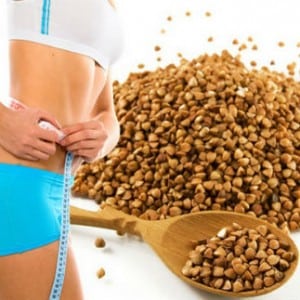
- First of all, pay attention to kefir, which in combination with buckwheat significantly improves digestion. A low-fat product is best. You can drink it even with a strict diet, up to 1 liter per day.It is preferable to consume it half an hour before and half an hour after meals. You can also pour it over porridge.
- The buckwheat diet can be varied with green sour apples. It is recommended to eat them 2 times a week, 2-3 apples between meals. Eat them no later than 4 hours before bedtime.
- In the case of a light diet, boiled beef, fresh vegetables and hard cheese are added to buckwheat. However, this will slow down the weight loss process, and you will not be able to lose no more than 3 kg in a week.
- If you are on a strict diet, as an exception, you can occasionally eat a few dried fruits and a spoonful of raw chopped cabbage. This is also worth doing if you feel weak and tired.
To avoid gaining weight again and getting an eating disorder, it is recommended to gradually exit the diet. Increase portions and introduce new foods little by little. Try to follow the principles of healthy eating after the diet.
Contraindications
Like any other limited nutrition program, the buckwheat diet has its drawbacks and is not suitable for everyone. You should be careful, and maybe even abandon this method of losing weight, in the following cases:
- diabetes;
- pregnancy and feeding;
- kidney disease, heart failure;
- disorders of the gastrointestinal tract;
- hypotension or hypertension;
- intense training or work involving severe physical exertion.
Conclusion
Buckwheat is one of the healthiest grains. It is affordable and available in every store. Despite being affordable, it contains a unique composition of nutrients and vitamins, which is almost ideal for dieting. But cereal also has a number of disadvantages and limitations that should not be forgotten.
During the diet, carefully monitor your well-being and mood, adhere to deadlines, control portions and move from the diet to a regular diet gradually. Following these simple rules will help you maximize your benefits of buckwheat and achieve the best results.